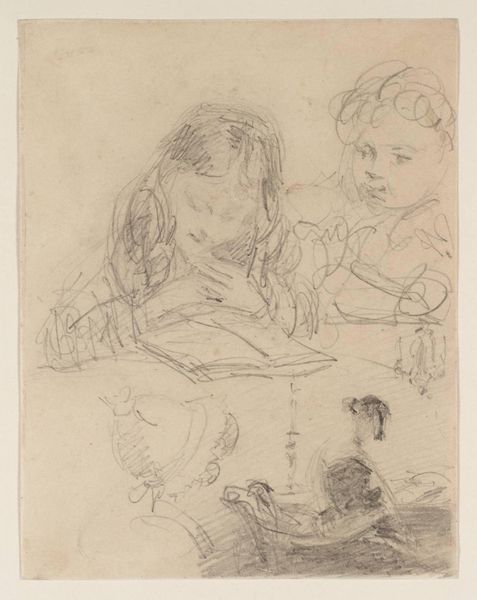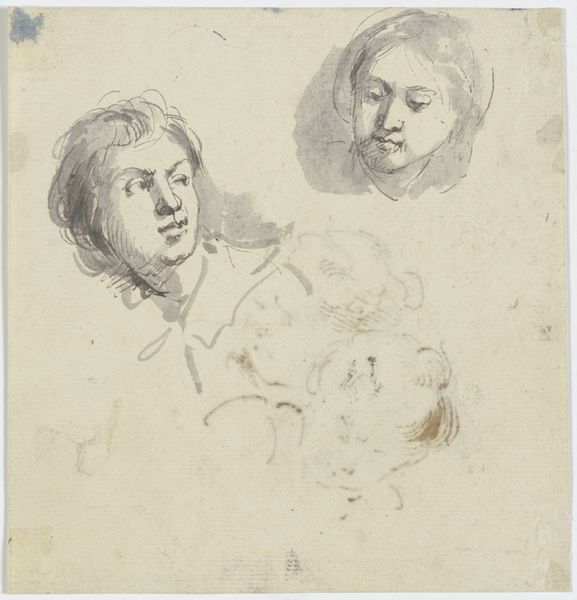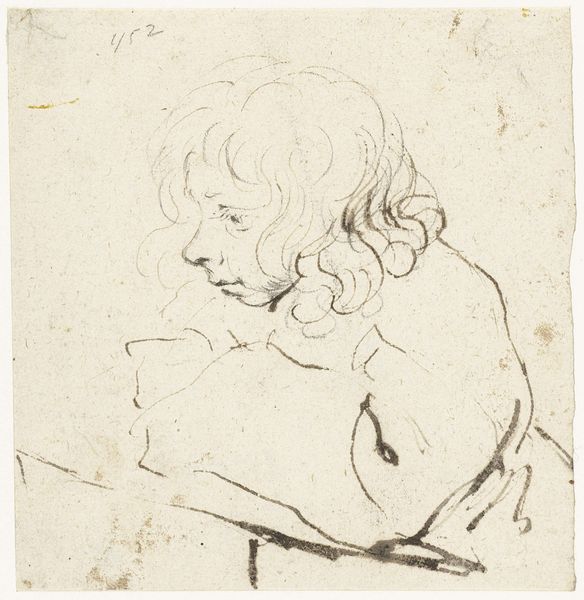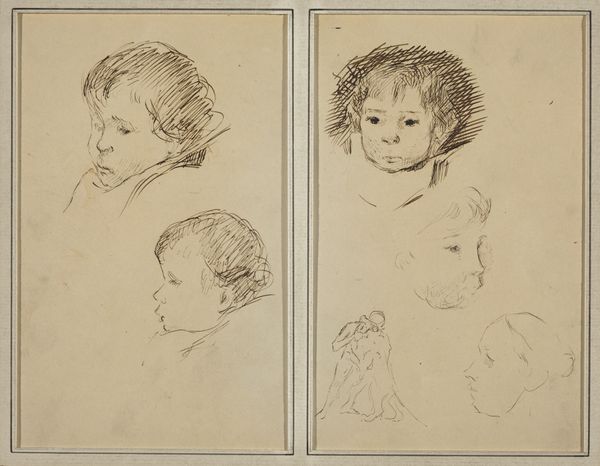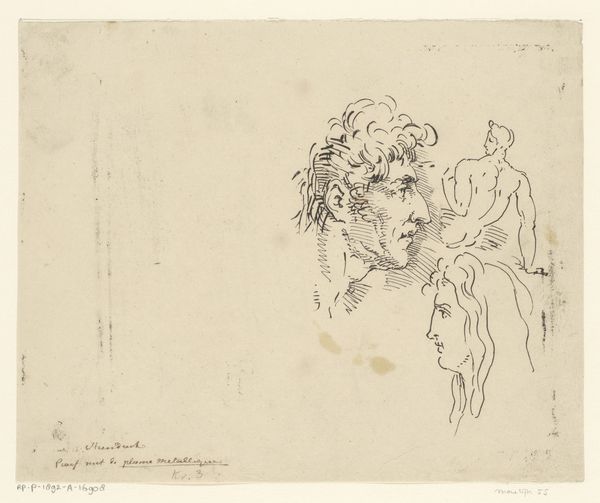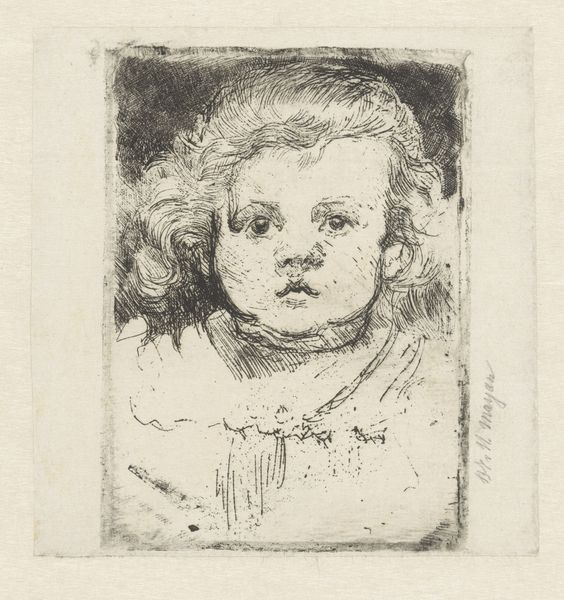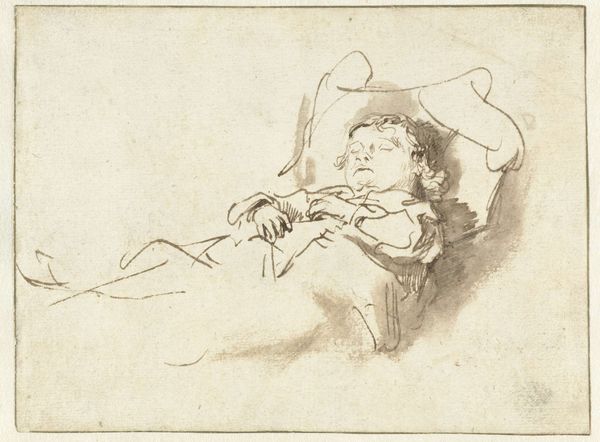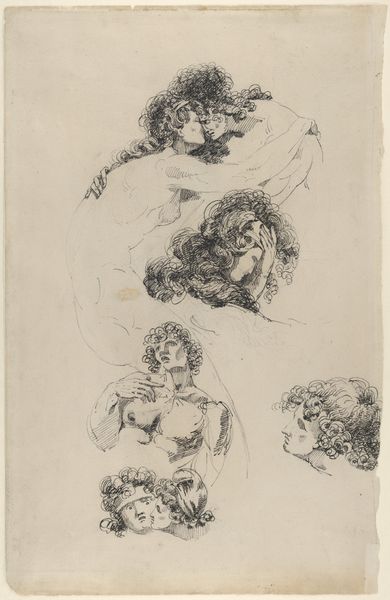
drawing, ink, chalk
#
portrait
#
drawing
#
baroque
#
figuration
#
ink
#
chalk
Copyright: Public Domain
Jacob de Wit made this drawing, "Two Angel Heads," in the first half of the 18th century. In this period, religious imagery served not only devotional but also decorative purposes, especially in private homes. De Wit, who worked in the Netherlands, was known for his illusionistic ceiling paintings, often featuring heavenly scenes. This sketch likely served as a preparatory study, showcasing his mastery of depicting cherubic figures. The cherubs became a popular motif in Dutch art and design, symbolizing innocence and divine favor but also prosperity and a sense of refined taste. The easy elegance of the drawing shows that the artist could cater to the wealthy merchant class who sought to adorn their homes with symbols of cultural and material achievement. To fully understand the social context of De Wit's work, examining period inventories, architectural records, and decorative arts publications would be invaluable resources.
Comments
No comments
Be the first to comment and join the conversation on the ultimate creative platform.
